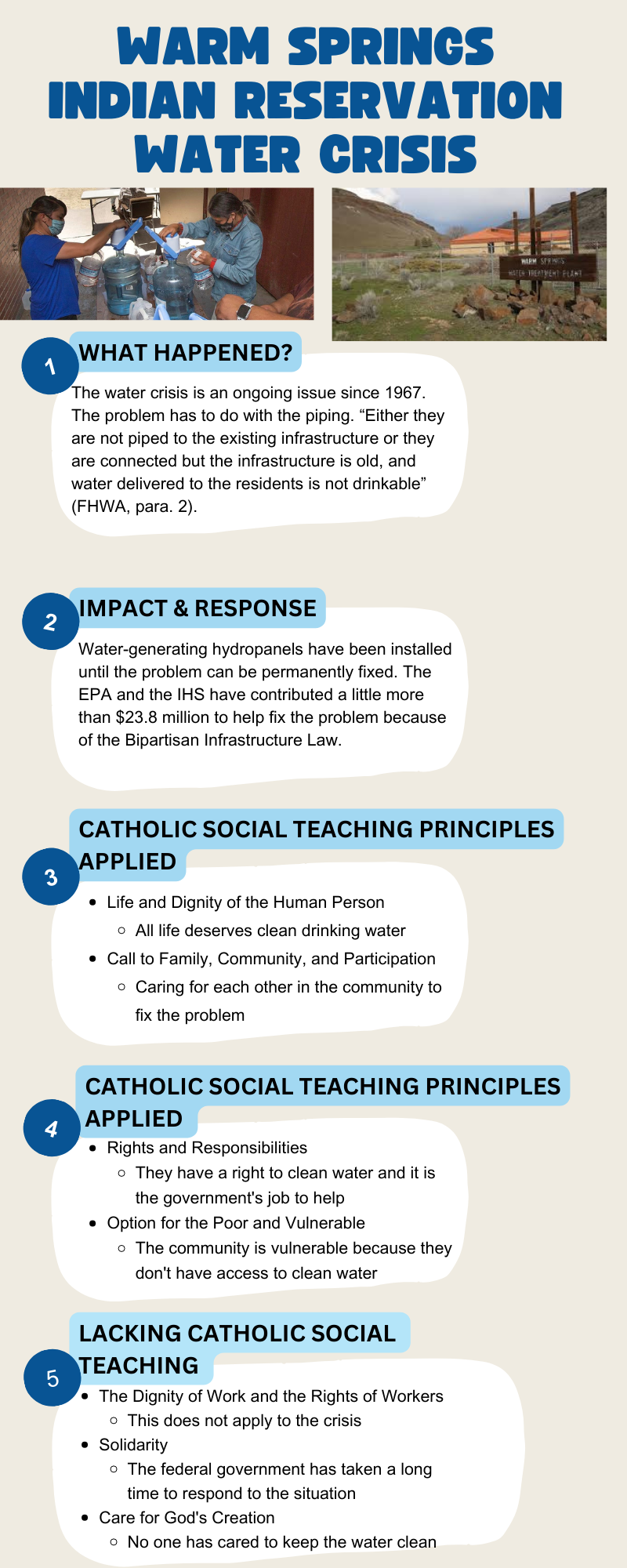The Warm Springs Indian Reservation water crisis is a complex issue that has plagued the indigenous community of the Warm Springs Tribe in Oregon for decades. Situated in the arid landscape of central Oregon, the reservation has faced numerous challenges in accessing clean and reliable water sources. The scarcity of water, compounded by deteriorating infrastructure and environmental degradation, has had severe consequences for the health, livelihoods, and cultural integrity of the tribe. Historically, the Warm Springs Tribe has relied on the Deschutes River for its water needs. However, over-extraction for agricultural and municipal purposes and climate change-induced droughts have diminished water availability in the region. This has increased competition for limited water resources, exacerbating tensions between the tribe and other stakeholders.
Furthermore, adequate infrastructure has resulted in better water quality and reliable supply within the reservation. Aging pipes, leaking storage tanks, and insufficient wastewater treatment facilities have contributed to water contamination and shortages, posing significant health risks to the community. The lack of access to clean water has disproportionately affected vulnerable populations, including children, the elderly, and those with pre-existing health conditions. In recent years, the Warm Springs Tribe has taken steps to address the water crisis and ensure the long-term sustainability of its water resources. One such initiative is the implementation of water conservation measures aimed at reducing consumption and promoting efficient use of water. These efforts include adopting drip irrigation systems in agriculture, installing low-flow fixtures in homes and businesses, and public awareness campaigns on water conservation practices.
Additionally, the tribe has sought to diversify its water sources to mitigate the impact of drought and climate variability. This has involved exploring alternative water sources such as groundwater, reclaimed wastewater, and rainwater harvesting. By investing in decentralized water systems and infrastructure upgrades, the tribe aims to enhance water security and resilience in the face of changing environmental conditions. Another critical aspect of addressing the water crisis is improving water governance and management on the reservation. Collaborative decision-making processes involving tribal leaders, government agencies, and local stakeholders are essential for developing holistic and sustainable water management strategies. By incorporating traditional ecological knowledge and indigenous perspectives into water governance frameworks, the Warm Springs Tribe can ensure the preservation of its cultural heritage while pursuing water security goals.
Looking ahead, the solution to the Warm Springs Indian Reservation water crisis requires a multi-faceted approach that integrates technological innovation, policy reforms, and community engagement. Investing in infrastructure upgrades, promoting water conservation, and fostering partnerships with external stakeholders are critical components of a comprehensive water management strategy. As provided by the Federal Government the reservation was provided a Water-Generating Hydropanel Farm was put into place in the reservation before a permanent fix could be made to the water. Along with this 23.8 million dollars were raised for the new water repairs as these repairs are still in progress as of now
Furthermore, addressing the root causes of the water crisis, such as climate change and unsustainable water use practices, will require coordinated action at the local, regional, and national levels. By advocating for stronger environmental regulations, supporting renewable energy development, and promoting sustainable land management practices, the Warm Springs Tribe can contribute to broader efforts to mitigate the impacts of climate change and protect water resources for future generations.
In conclusion, the Warm Springs Indian Reservation water crisis is a pressing issue that demands urgent attention and concerted action. By implementing sustainable water management practices, investing in infrastructure improvements, and fostering collaborative partnerships, the tribe can overcome its challenges and ensure a future where clean and reliable water is accessible to all community members.

